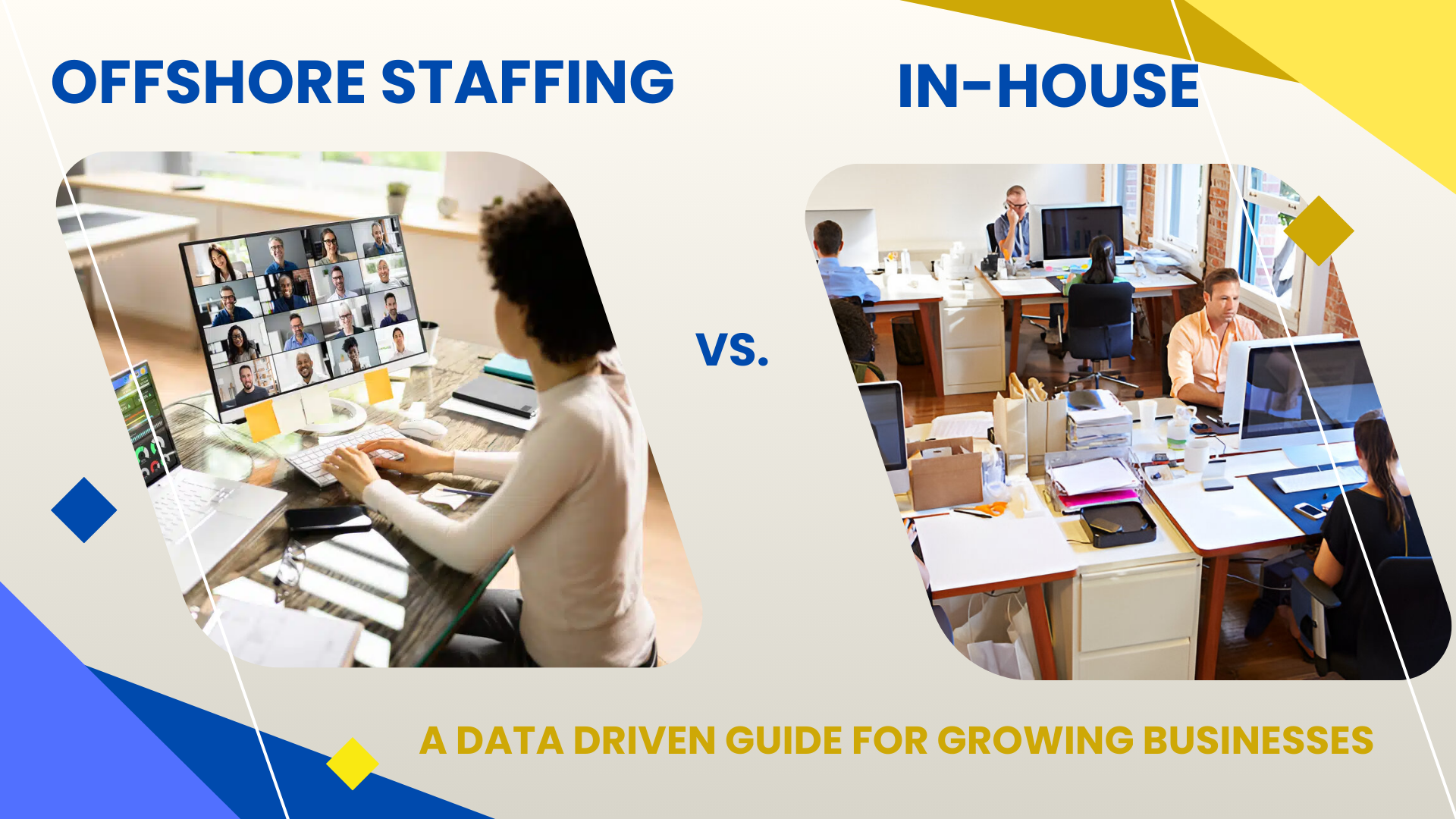For companies in growth mode, talent is the lifeblood of expansion. The challenge lies not just in finding the right people but also in deciding how to structure teams for both efficiency and sustainability. Offshore staffing and in-house hiring represent two very different paths, and each brings distinct advantages and risks. Choosing between them is not a matter of preference but of strategy, and the best decision is one informed by data.
Defining the Models: In-house staffing involves recruiting, training, and managing employees directly within the organization’s offices. These employees are embedded in company culture and dedicated exclusively to the business. Offshore staffing, on the other hand, refers to hiring employees in another country, often where labor costs are lower but professional skills are equally strong. Unlike outsourcing, which typically delegates functions to a third-party vendor, offshore staffing allows companies to build dedicated teams abroad that work as an extension of their existing workforce.

Cost Efficiency: The cost factor is usually the first consideration. In-house teams, while offering full control, come with significant overhead costs, including salaries, benefits, office space, training, and equipment. According to the Society for Human Resource Management, the average cost per hire in the United States is over $4,000, excluding long-term employment expenses. Offshore staffing dramatically reduces these costs. For example, research from Deloitte highlights that companies save 30 to 60 percent on labor expenses by hiring offshore. However, the calculation should go beyond salaries. Businesses must also consider hidden costs such as infrastructure investments for in-house teams or vendor management costs for offshore teams.
Access to Talent: The global talent shortage is pushing many businesses toward offshore staffing. Korn Ferry projects that by 2030, the talent gap could result in 85 million unfilled jobs worldwide, costing companies trillions in lost opportunities. In-house hiring relies heavily on local labor markets, which may be saturated or lacking in specialized skills. Offshore staffing expands access to highly educated professionals in regions with strong English proficiency, technical expertise, and lower living costs. This global reach enables companies to fill skill gaps faster and more affordably.
Scalability and Flexibility: One of the most pressing challenges for growing businesses is scaling operations quickly without sacrificing quality. In-house hiring is time-intensive, often requiring weeks or months to recruit and onboard new employees. Offshore staffing provides greater agility. Dedicated offshore teams can be ramped up or down depending on workload, giving businesses flexibility during periods of rapid growth or economic uncertainty. This scalability is especially beneficial for startups and seasonal industries where demand fluctuates.
�

Control and Integration: In-house teams offer a clear advantage in terms of control, culture, and direct oversight. Employees are physically present, immersed in company values, and typically more engaged in long-term goals. Offshore staffing, while remote, has evolved to bridge this gap. Unlike outsourcing, offshore teams work exclusively for one company, often following the same systems, communication tools, and performance standards as in-house teams. With the right management practices, offshore employees can integrate seamlessly, but this requires deliberate effort in communication and culture-building.
Risk and Security: Both models carry risks. In-house teams reduce concerns around data control since information rarely leaves company infrastructure. However, they are not immune to internal security breaches or compliance lapses. Offshore staffing introduces additional considerations, including cross-border data privacy laws and vendor reliability. According to IBM’s Cost of a Data Breach Report, the global average cost of a data breach in 2023 was $4.45 million, underscoring the need for stringent safeguards regardless of the staffing model. Businesses opting for offshore staffing must ensure compliance with international standards and choose partners with robust security protocols.

Long-Term Strategic Impact: In-house teams help preserve institutional knowledge and strengthen company culture, which can be invaluable for long-term stability. However, they may also create bottlenecks if a business cannot recruit or scale fast enough. Offshore staffing empowers companies to remain agile and competitive, but overreliance on offshore teams could weaken cultural cohesion or increase dependency on foreign labor markets. Many successful companies strike a balance, keeping core strategic roles in-house while leveraging offshore staffing for support functions or areas requiring rapid scaling.
Conclusion: The decision between offshore staffing and in-house hiring is ultimately a question of alignment with business goals. In-house teams provide control, culture, and continuity, but they come at a higher cost and slower pace of scaling. Offshore staffing delivers cost savings, global talent access, and agility, but requires strong management and trust in international partnerships. For growing businesses, the best approach often lies in a hybrid model, blending the cultural strengths of in-house teams with the efficiency and flexibility of offshore staffing. By weighing the decision with data, leaders can build workforce models that drive both immediate performance and sustainable growth.
Ready to see how a strategic BPO partnership can fuel your growth? [Schedule Your Free Consultation with a Parasol Expert: https://parasolbpo.com/schedule-a-free-consultation/]


Manueltof
same shit, bro купить Кокаин, Мефедрон, Экстази Ты нам лучьше отзыв напиши о работе магазина 😀